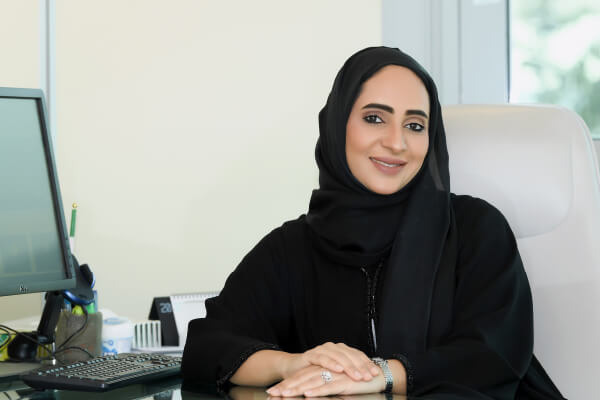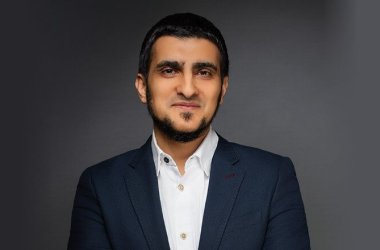TahawulTech.com spoke with the UAE Ministry of Infrastructure Development’s director of IT Hessa Al Suwaidi, who outlined the organisation’s technology strategy for the coming years.

Can you give us some background on MoID?
The Ministry of Infrastructure Development is tasked with building houses, schools, hospitals and roads for the UAE. We construct roads and federal buildings for ministries, as well as maintaining and operating roads.
How long have you been working for MoID? Where did you study?
I’ve been at MoID for 15 years. I started as a programmer, then was head of the e-services section and have been IT director for five years. I studied at Zayed University.
What are the most important elements of MoID’s IT strategy?
Whether it’s a case of artificial intelligence, blockchain or whatever other technologies we’re looking at using, we do the correct evaluations and assessments first around our current technology. We look to deliver readiness reports to assess whether we are really ready for any proposed changes.
We want to deliver a fully automated infrastructure for our business. We cannot move to AI or blockchain until then. We’re building the first steps for both of them. The market is moving but they will take time. We have around 400 processes related to our core business. When we started our smart government journey, we focused on customer service, but now we’re thinking internally about how to automate our processes for our core business cycle.
In order for AI to work, it needs data across the value chain. We’re re-engineering our value chain to make it easier and more automated, to deliver smart dashboards and smart reporting systems.
What aspects are important in measuring your AI maturity?
Everybody has a chatbot these days, but I don’t believe that constitutes a mature level of AI. Across the world, some countries are ready for AI, but generally speaking most aren’t. Real AI is when you let the machine do the full work of a human, using different data and databases, all of which is integrated. You need to build the right platform and start by looking at your processes. You need to make processes more realistic and then automate them. Once you’ve automated all of the value chain, then your system will be more AI-ready. We’re looking to re-engineer our processes, which should take eight months, and then automating our value chain, which should take a year.
How is the role of IT changing within MoID?
The IT function was previously there to develop systems and to manage the IT infrastructure and IT operations. We’re now being asked to innovate and identify where we can fill gaps with innovative technologies.
We’re using robotic engineers to predict some data, and we are testing ways we can collect data for full automation. We need to think about how we can reduce the number of processes and procedures for the government. We have a lot of old processes that need re-engineering. We want to cut our processes to hours instead of days.
How do you think robotic process automation could improve your operations?
Our engineers now visit construction sites on a regular basis. They report to the contractor and meet with the project manager. With RPA, we could use hologram cameras to monitor the state of sites and compare these with plans and ensure the exact size for various specifications in order to monitor the progress of construction. We can generate reports in real time.
What kind of smart systems is MoID using?
We’re implementing our road asset management system (RAMS) for collecting data and analysing our future needs. It collects data to improve the maintenance of the roads, and can give insights and suggestions such as whether we should extend a two or three-lane road into one with six lanes. We’re always looking to integrate new devices to our RAMS.
There’s also our geographic information system, which we’re using to building our spatial data infrastructure (SDI). That’s an integrated system that collects data across our projects and gives us a futuristic plan for where we should build schools, houses etc. We keep customising our platforms according to our needs. MoID currently receives requests from federal entities, but soon, with our GIS, we will know that certain land is better for certain types of development. For example, there may be an area that is densely populated with children and could be experiencing high demand for new primary schools.
How is MoID aligning with the UAE’s smart government objectives?
It’s so important for us to have accurate data and be integrated with other entities. We’re working on various projects with other entities. Data is now the most important aspect of that. The TRA is evaluating us on implementing smart government criteria, and we’re working with them to identify ways we can make life easier by integrating with Emirates ID and make procedures easier for internal and external customers. MoID was named in the top five UAE government entities in 2018 for its smart initiatives.
How do you think technology will disrupt the development of infrastructure?
It will bring in a lot of change. It will deliver the seamless transaction of data and services, greater accuracy and will ensure no human interaction is needed at stages of the value chain. It will deliver faster decision making through dashboards, which will provide better governance on projects. Entities currently apply for requirements, but the right data around UAE land and urban planning will provide governance to see what’s needed. Knowing the exact land needs will be more systematic, so governance will be improved. In turn, that will improve customer satisfaction levels.





